Can Asparagus Fern Suffer Winter Temperatures?
Written by Ivy
Dec 11 2021
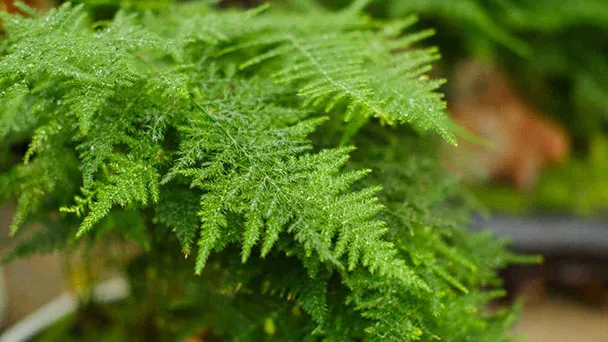
Asparagus fern is a plant that is not resistant to severe cold. If it is cultivated in winter, it is better to be indoors. If the temperature is lower than 5 ℃, the growth of asparagus fern will be affected.
The indoor temperature between 12-18 ℃ is the most suitable for the growth of asparagus fern, but we should pay attention to opening windows for ventilation. If the ambient temperature exceeds 20 ℃, it is necessary to open a window to cool Asparagus fern, because it has high requirements for the growth ambient temperature.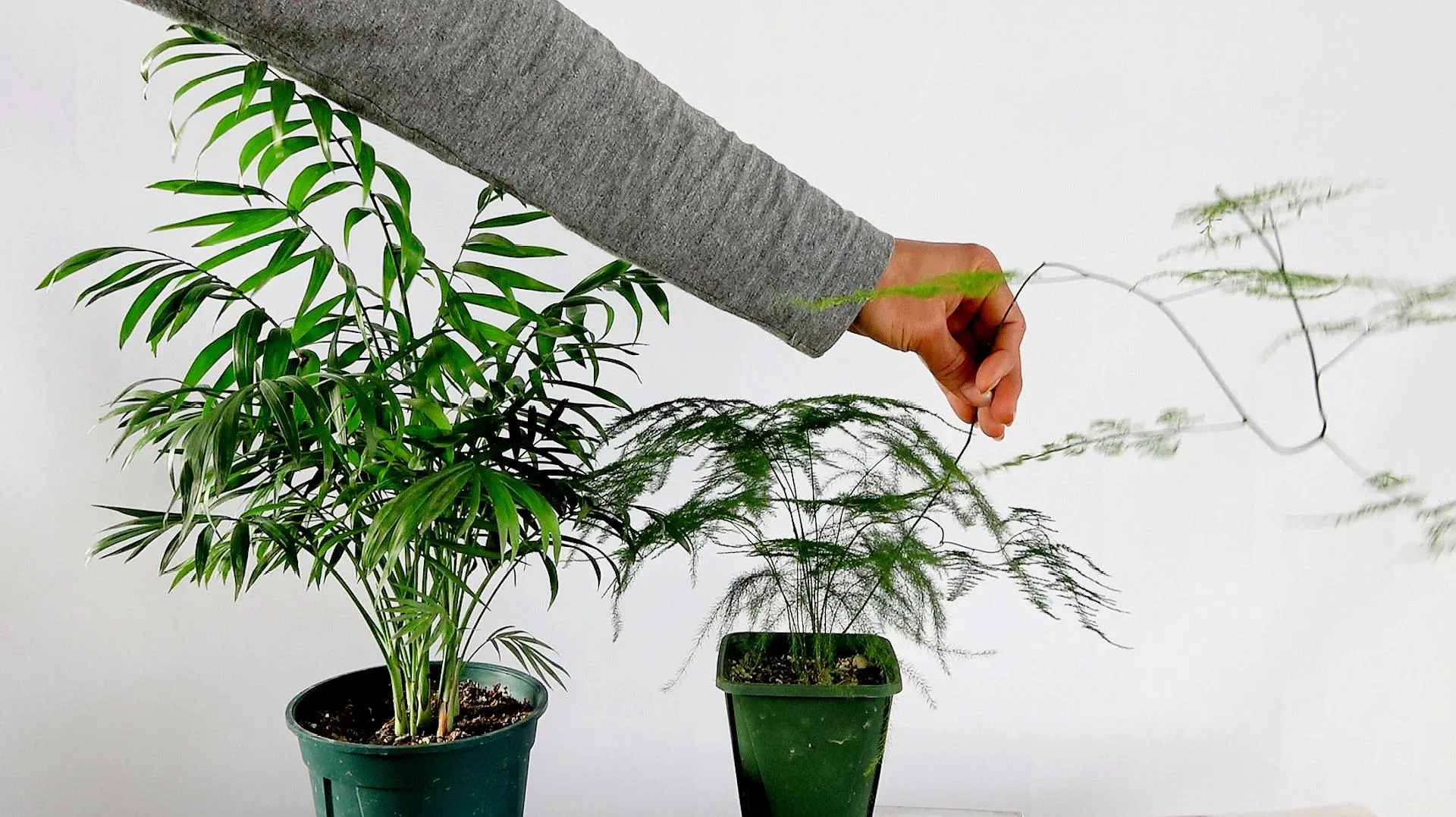
Therefore, it should be more careful to raise asparagus fern in winter, but the growth environment of asparagus fern is different, and there can be no unified maintenance method. We should take care of it according to our own actual situation of asparagus.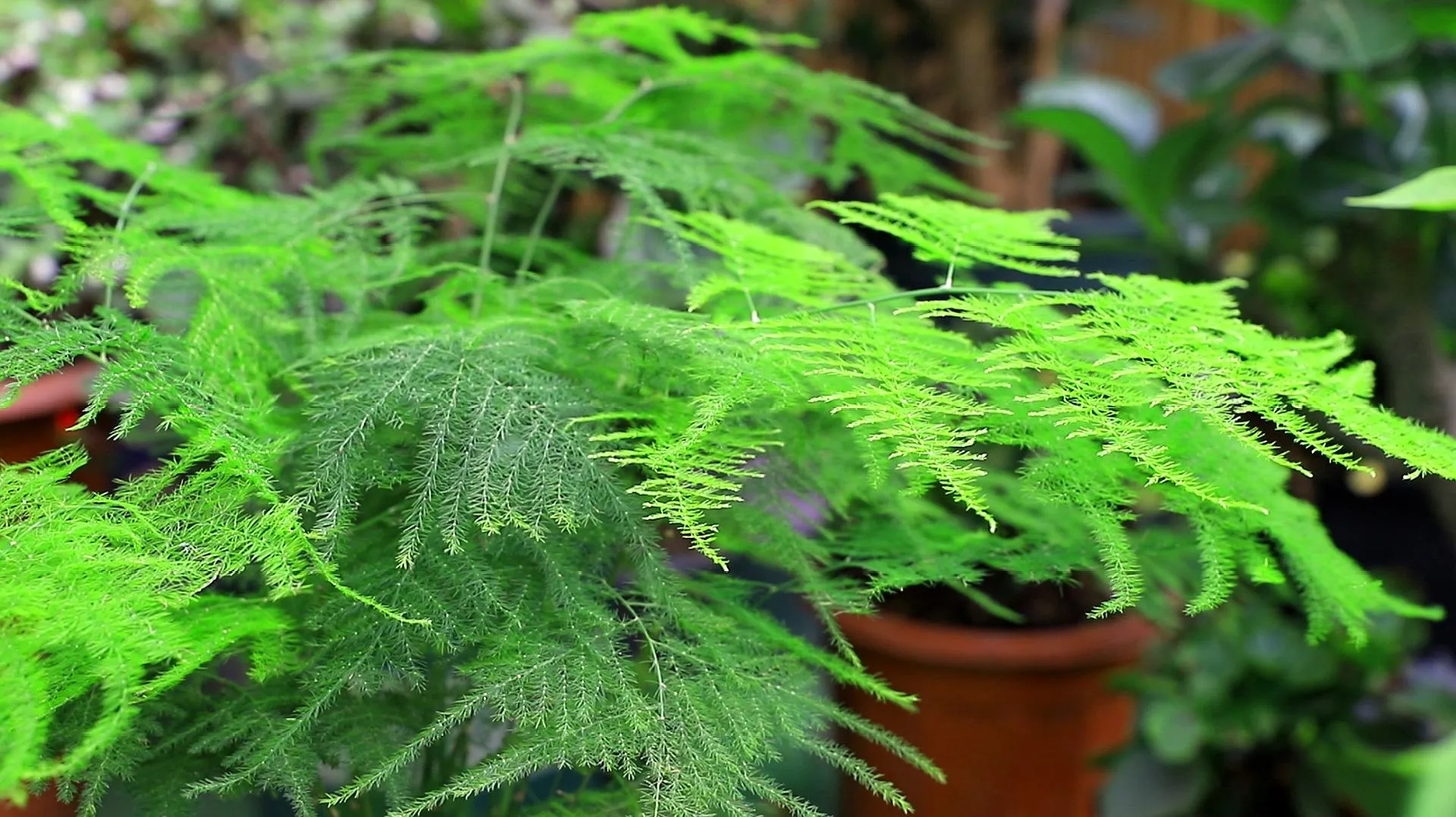 In winter, we should pay attention to the warmth of Asparagus ferns outdoor. We can pick up some leaves and cover them on the flower soil of Asparagus ferns outdoor to reduce the frostbite of low temperature on the roots of Asparagus ferns. In addition, for Asparagus ferns outdoor, we also need to build a "warm house" for it to prevent the damage to Asparagus ferns outdoor caused by the sudden attack of violent storms and bad weather. In addition, with the decrease of temperature, we should also reduce the watering of asparagus ferns outdoor, which can be watered once every 10 days.
In winter, we should pay attention to the warmth of Asparagus ferns outdoor. We can pick up some leaves and cover them on the flower soil of Asparagus ferns outdoor to reduce the frostbite of low temperature on the roots of Asparagus ferns. In addition, for Asparagus ferns outdoor, we also need to build a "warm house" for it to prevent the damage to Asparagus ferns outdoor caused by the sudden attack of violent storms and bad weather. In addition, with the decrease of temperature, we should also reduce the watering of asparagus ferns outdoor, which can be watered once every 10 days.
The temperature in winter is a great test for asparagus ferns outdoors. Asparagus ferns is not resistant to severe cold. asparagus ferns in winter will enter the dormancy period, and asparagus cannot survive at too low temperature, so heat preservation is the first element at this time. We need to transplant the outdoor Asparagus ferns to the indoor one. The temperature should be about 10 degrees and placed in a ventilated place.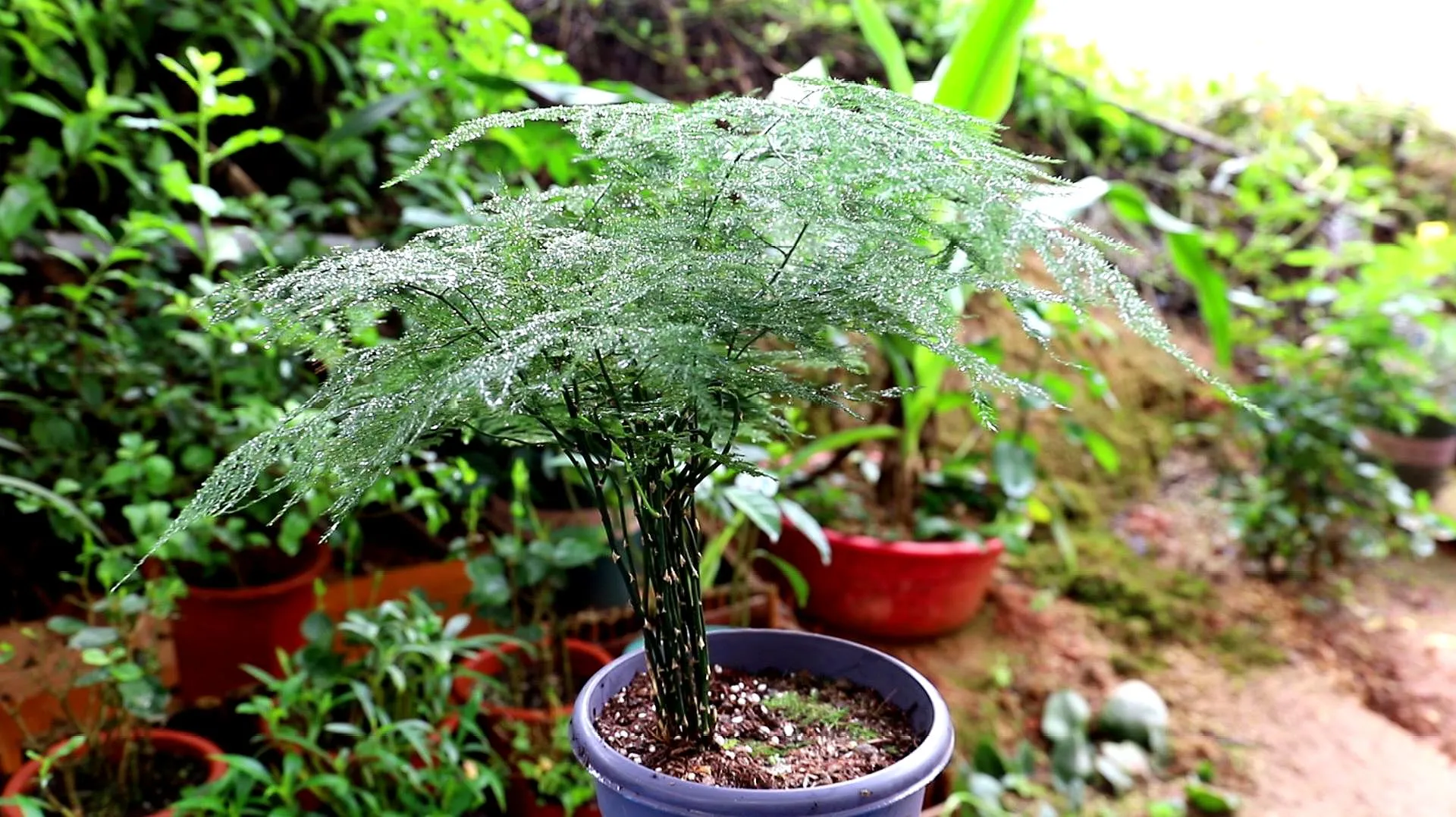 When maintaining asparagus ferns indoors in winter, we should also try to let the plants bask in more sunshine. Sufficient light can provide the nutrients required by asparagus ferns indoors. In addition, when watering asparagus ferns indoors, we should also pay attention to that cold water cannot be poured directly in cold winter. We should put the clean water in a bottle for sealed storage, and then water the plants after a day or two.
When maintaining asparagus ferns indoors in winter, we should also try to let the plants bask in more sunshine. Sufficient light can provide the nutrients required by asparagus ferns indoors. In addition, when watering asparagus ferns indoors, we should also pay attention to that cold water cannot be poured directly in cold winter. We should put the clean water in a bottle for sealed storage, and then water the plants after a day or two.
In colder weather, we can build a heat preservation shed for Asparagus ferns indoors with film or transparent plastic bags. When the temperature is low, we can put it in for heat preservation and moisture retention. When the sun is good at noon, we can move Asparagus ferns indoors out to bask in the sun for photosynthesis, so as to accumulate nutrients and help ourselves survive the winter, But don't put the Asparagus ferns indoors at the air conditioner blower. Although it is warm, Asparagus ferns indoors can easily cause yellow leaves.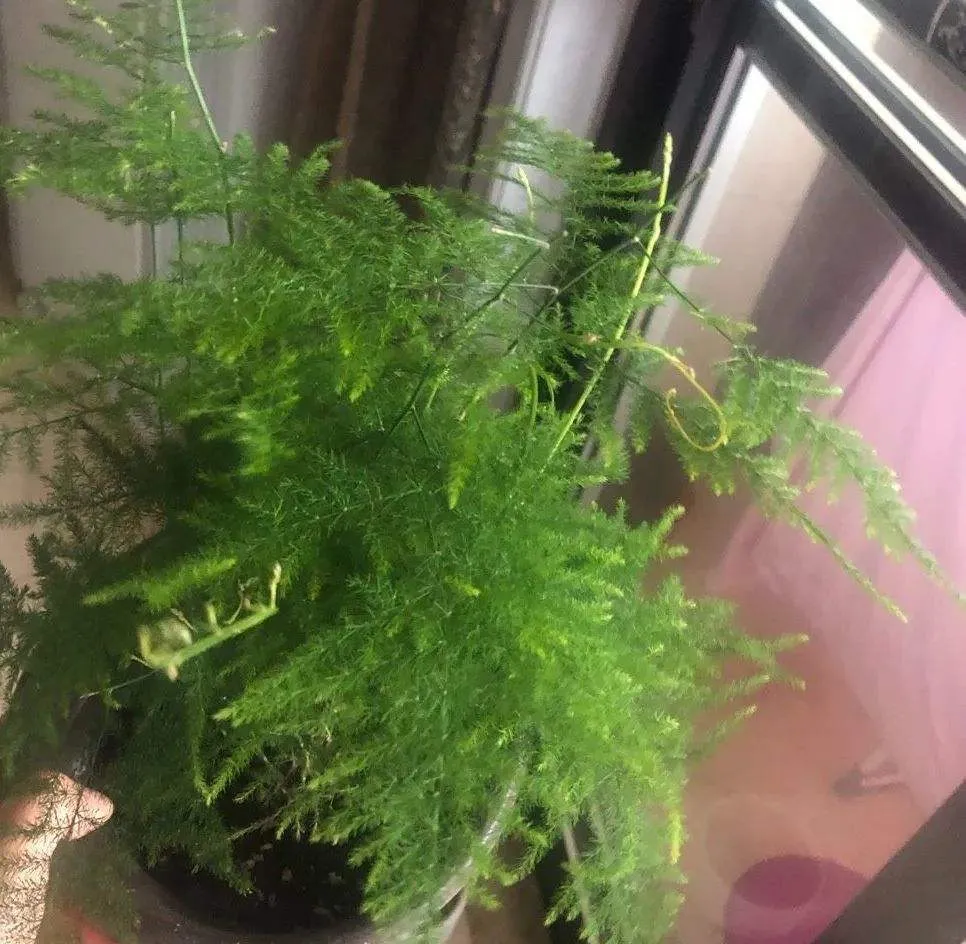
The indoor temperature between 12-18 ℃ is the most suitable for the growth of asparagus fern, but we should pay attention to opening windows for ventilation. If the ambient temperature exceeds 20 ℃, it is necessary to open a window to cool Asparagus fern, because it has high requirements for the growth ambient temperature.

Cold Temperature EffectsOverwintering Asparagus Ferns Outdoors/in the GardenOverwintering Asparagus Ferns Indoors
Cold Temperature Effects
As the weather gets colder and colder, asparagus fern grown at home has come to a more difficult season. Asparagus fern is afraid of cold and sensitive to environmental conditions. If asparagus fern is not properly maintained, it is prone to yellow leaves and rotten roots.Therefore, it should be more careful to raise asparagus fern in winter, but the growth environment of asparagus fern is different, and there can be no unified maintenance method. We should take care of it according to our own actual situation of asparagus.
Overwintering Asparagus Ferns Outdoors/in the Garden

The temperature in winter is a great test for asparagus ferns outdoors. Asparagus ferns is not resistant to severe cold. asparagus ferns in winter will enter the dormancy period, and asparagus cannot survive at too low temperature, so heat preservation is the first element at this time. We need to transplant the outdoor Asparagus ferns to the indoor one. The temperature should be about 10 degrees and placed in a ventilated place.
Overwintering Asparagus Ferns Indoors

In colder weather, we can build a heat preservation shed for Asparagus ferns indoors with film or transparent plastic bags. When the temperature is low, we can put it in for heat preservation and moisture retention. When the sun is good at noon, we can move Asparagus ferns indoors out to bask in the sun for photosynthesis, so as to accumulate nutrients and help ourselves survive the winter, But don't put the Asparagus ferns indoors at the air conditioner blower. Although it is warm, Asparagus ferns indoors can easily cause yellow leaves.

Read More:
How to Trim an Asparagus Fern?
Is an Asparagus Fern Poisonous to Cats?
How Often to Water Asparagus Fern?
How to Fix Asparagus Fern Roots Ball Rot?
How Much Light Does Asparagus Fern Need?
How to Repot Asparagus Fern?
The Best Potting Soil for Asparagus Fern
How to Grow Asparagus Fern From Seed
How to Grow Asparagus Ferns Indoors or Outdoors
Why Is My Asparagus Fern Turning Yellow - 7 Reason
How To Propagate Common Asparagus Fern
How to Grow and Care for Asparagus Fern
Latest Updated
- Benefits of Bugleweed - 7 Science-backed Health Benefits
- Bugleweed Dangers & Side Effects - Is It Poisonous?
- How to Plant Evergreen Trees - What You Should Know
- When to Plant Evergreens - Grow Guide for Evergreen Trees
- 12 Wonderful Evergreen Shrubs for Your Garden
- 12 Popular Evergreen Plants with Pictures for Beginners
- When And How To Prune A Lilac Bush Like a Pro
- How to Grow & Care for Lilac Vine (Hardenbergia Violacea)
- Japanese Lilac Tree (Syringa Reticulata) Care & Propagation Guide
- Shumard Oak Pros and Cons - What to Know
Popular Articles
- Winter maintenance of Antirrhinum Majus
- How to Grow Terminalia Mantaly Tree
- How to Grow and Care for Crossostephium Chinense
- How to grow Antirrhinum Majus in spring
- Peristeria Elata (Dove Orchid) Profile: Info & Care Guide
- Underwatered Snake Plant (Sansevieria Trifasciata) - Signs And How To Fix
- How to Care for Brazilian Jasmine Plant (Mandevilla Sanderi)
- How to Grow & Care for Graptopetalum Purple Delight in Summer
- Rosa Chinensis (China Rose): Plant Growing & Care Tips
- How to Care for Baby Sun Rose (Aptenia Cordifolia)